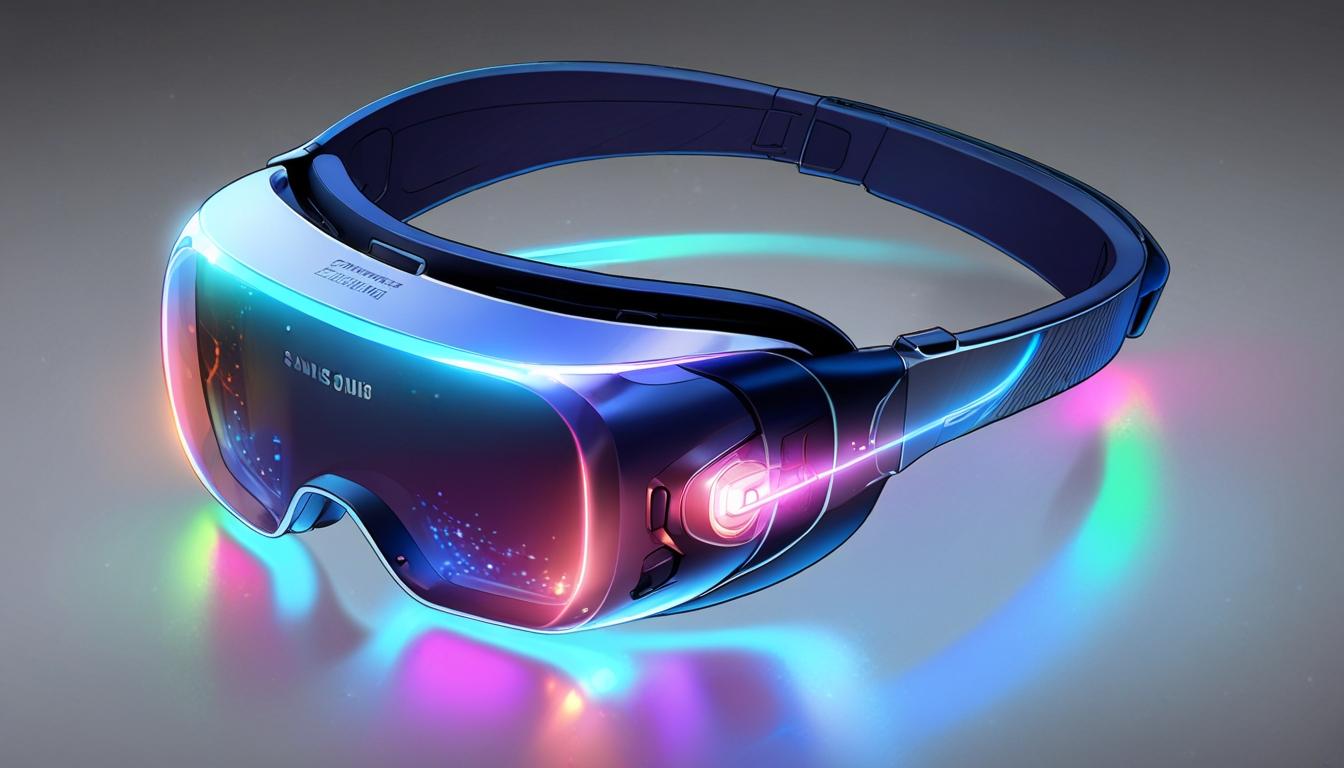Samsung Accelerates Development of Next-Gen AR Microdisplay Technology
As augmented reality (AR) continues to capture the imaginations of technology giants, Samsung is positioning itself as a significant player in this burgeoning field. The company is ramping up its efforts to develop innovative microdisplay technology, namely LED on Silicon (LEDoS). This new advancement promises to enhance the visual quality and performance of AR headsets, a market that is rapidly heating up amidst competition from industry stalwarts like Apple, Google, and Meta.
According to reports from The Korea Economic Daily, Samsung’s semiconductor division has embarked on the aggressive development of LEDoS, which is a compact display platform utilizing micro-LEDs mounted on silicon wafers. This approach aims to overcome critical limitations associated with existing technologies, particularly in terms of brightness and lifespan. With a planned pixel density between 6,600 and 7,000 pixels per inch (PPI), Samsung's LEDoS is set to surpass the 3,400 PPI resolution found in Apple’s Vision Pro headset, potentially setting a new benchmark in visual clarity for AR applications.
The implications of this technology extend beyond Samsung's own product lines. The company reportedly aims to supply its LEDoS technology to both Apple and Meta for use in their forthcoming AR devices. Such collaborations could significantly alter the dynamics of the AR headset landscape, driving innovation and competition. Notably, Samsung also plans to unveil its second-generation AR glasses in 2027, coinciding with commercial production of the LEDoS technology.
The momentum behind AR is palpable across the tech industry, as evidenced by the diverse array of devices showcased at recent technology expos, such as CES 2025. Companies ranging from established giants like Sony to start-ups have begun exploring the possibilities of AR, designing innovative products that promise to reshape user experiences. Despite a history of setbacks—most famously within Google’s own ill-fated foray into smart glasses with Google Glass—the industry is revitalising confidence through fresh releases and concepts.
Meta, for example, has recently introduced its first prototype AR glasses, dubbed "Orion," which also harnesses LEDoS technology. These glasses, weighing a mere 98 grams, feature a sophisticated optical design aimed at developers and testers, although mass production remains on the horizon. While the prototype represents a promising leap forward, challenges regarding cost—potentially nearing $10,000 each—and technical constraints pertaining to resolution remain.
Apple, too, is taking significant steps in this realm. The company has requested that Samsung develop micro OLED panels for its upcoming AR/VR glasses, signalling a keen interest in diversifying its technological offerings. With a projected launch window for its first headset already anticipated as early as January 2023, and a follow-up device expected by 2025, Apple is clearly keen to stake its claim in this competitive market.
As Samsung, Google, Apple, and Meta intensify their focus on AR technology, the stakes have never been higher. The potential for transformative applications in both consumer and professional spaces is inspiring a renewed wave of innovation, challenging legacy narratives while inviting new technological pathways. Though the AR market has seen its share of initial failures, the commitment from these tech powerhouses underscores a collective belief that augmented reality is indeed the future of interactive technology.
With LEDoS on the horizon, Samsung's advancements may well play a pivotal role in shaping the next generation of AR headsets, marking a significant evolution in a field that has long been considered the frontier of digital interaction.
Reference Map:
- Paragraph 1 – [1], [2]
- Paragraph 2 – [2], [5]
- Paragraph 3 – [1], [3], [4]
- Paragraph 4 – [5], [6]
- Paragraph 5 – [7]
Source: Noah Wire Services
